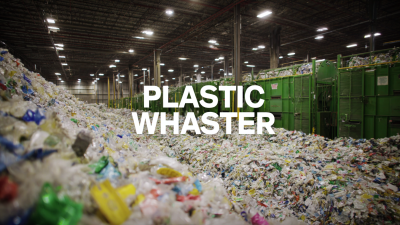In recent years, the urgent need for sustainable recycling and waste management solutions has driven innovation across various industries. One such advancement is the development of the Rubber Tire Shredder, a powerful tool that transforms used tires into valuable resources while addressing the growing concern of tire waste in landfills. As the environmental impact of discarded tires becomes increasingly evident, utilizing a Rubber Tire Shredder not only mitigates the ecological footprint but also opens avenues for new product creation. This guide will explore the numerous benefits of using Rubber Tire Shredders, including their role in resource recovery, energy savings, and cost-effectiveness. By unlocking the potential of this eco-friendly technology, industries can contribute to a greener future while efficiently managing the challenges associated with tire disposal. Whether you are a business owner, environmental advocate, or simply curious about sustainable practices, understanding the functionality and advantages of Rubber Tire Shredders is essential in today’s waste management landscape.

Tire recycling plays a crucial role in waste management, given the environmental challenges posed by discarded tires. Millions of tires are discarded each year, and if not properly managed, they can contribute to landfill overflow, environmental pollution, and even health hazards, as they can become breeding grounds for pests like mosquitoes. By prioritizing tire recycling, communities can significantly reduce the number of tires that end up in landfills, transforming potential waste into valuable raw materials.
Rubber tire shredders are at the forefront of this recycling movement, providing an efficient means of processing used tires. These machines break down tires into smaller, manageable pieces, which can then be repurposed for various applications, including playground surfaces, asphalt production, or as a component in new rubber products. Moreover, the recycling process helps conserve natural resources and lowers the carbon footprint associated with manufacturing new materials. By investing in tire shredding and recycling technologies, we not only enhance waste management practices but also promote a more sustainable future.
This chart illustrates the benefits of tire recycling through rubber tire shredders. The data represents the percentage of waste reduction, energy savings, and recycled materials, alongside the estimated cost savings achieved through effective tire recycling practices, highlighting its sustainable impact in waste management.
 Rubber tire shredders are essential machines in the recycling and waste management industry, designed to efficiently break down discarded tires into smaller, manageable pieces. The mechanics behind these shredders are engineered for optimal performance, utilizing heavy-duty blades that can withstand the tough rubber material. As tires are fed into the machine, the shredders employ a combination of tearing, cutting, and shearing forces to fragment the rubber into various sizes, depending on the desired output.
Rubber tire shredders are essential machines in the recycling and waste management industry, designed to efficiently break down discarded tires into smaller, manageable pieces. The mechanics behind these shredders are engineered for optimal performance, utilizing heavy-duty blades that can withstand the tough rubber material. As tires are fed into the machine, the shredders employ a combination of tearing, cutting, and shearing forces to fragment the rubber into various sizes, depending on the desired output.
The innovative design of rubber tire shredders includes features to ensure safety and durability. High torque and variable speed settings allow operators to adjust the shredding process according to the consistency of the tires being processed. Additionally, many models incorporate advanced technology such as conveyor systems that streamline the flow of materials, reducing the risk of jams and maximizing efficiency in recycling operations. By transforming waste tires into pieces suitable for further processing, rubber tire shredders play a crucial role in promoting sustainable waste management practices and reducing environmental impact.
Implementing tire shredders provides significant benefits for sustainable practices, particularly in recycling and waste management. One of the primary advantages is the reduction in landfill waste. By processing used tires, tire shredders facilitate the recycling of rubber, which can be transformed into various products such as playground surfaces, rubber mats, and asphalt. This not only minimizes the environmental impact associated with tire disposal but also conserves natural resources by creating secondary materials.
Moreover, tire shredders enhance the efficiency of waste management systems. The shredding process breaks down tires into manageable sizes, making them easier to transport and process at recycling facilities. This increased efficiency can lead to cost savings in waste management operations. Additionally, the availability of recycled rubber promotes sustainable manufacturing practices, providing industries with eco-friendly materials to utilize in their products. By investing in tire shredders, businesses can contribute to a circular economy, where waste is repurposed and reused, ultimately fostering a more sustainable future.
When selecting the right tire shredder for your recycling business, several key factors must be considered to ensure efficiency and maximize profits. Understanding the specific needs of your operation can help you pinpoint the appropriate type of shredder, whether it be for producing crumb rubber, tire-derived fuel, or other recycled products. As the tire recycling market continues to expand, projected to be worth $8.92 billion by 2029, investing in high-quality shredding equipment is crucial for staying competitive and meeting increasing environmental regulations.
Moreover, advice from industry experts highlights the importance of assessing different shredding technologies and processes. Mechanical shredding, for example, has been a favored choice due to its reliability and effectiveness in breaking down tires into manageable sizes. As waste management practices evolve, entrepreneurs are encouraged to stay updated on advancements in equipment and recycling techniques, which can lead to better resource recovery and reduced environmental impact.
 Operating and maintaining tire shredders effectively is crucial in maximizing their efficiency and ensuring safety in waste management processes. One of the best practices is to regularly inspect the shredder components, such as knives and screens, to identify wear and tear. According to a recent industry report, regular maintenance can increase operational lifespan by up to 30%, significantly reducing replacement costs. Ensuring that the shredder operates within its recommended capacity further reduces strain on the machinery, improving both performance and safety.
Operating and maintaining tire shredders effectively is crucial in maximizing their efficiency and ensuring safety in waste management processes. One of the best practices is to regularly inspect the shredder components, such as knives and screens, to identify wear and tear. According to a recent industry report, regular maintenance can increase operational lifespan by up to 30%, significantly reducing replacement costs. Ensuring that the shredder operates within its recommended capacity further reduces strain on the machinery, improving both performance and safety.
Additionally, training personnel on safety protocols is essential. The shredding process poses specific hazards, including risks related to entanglement and noise exposure. Establishing a strong safety training program can enhance awareness of these danger zones and cultivate a culture of safety within the workplace. Regular safety drills and proper personal protective equipment (PPE) usage can significantly mitigate risks, with studies showing that workplaces with robust safety training can reduce injury rates by nearly 50%. By prioritizing maintenance and safety, operators can optimize the performance of tire shredders while promoting a safer working environment.






